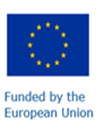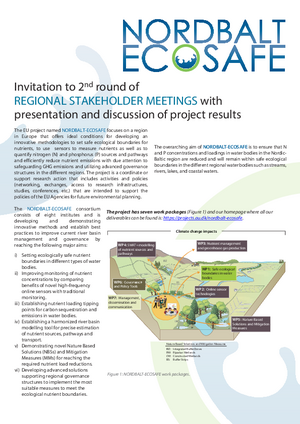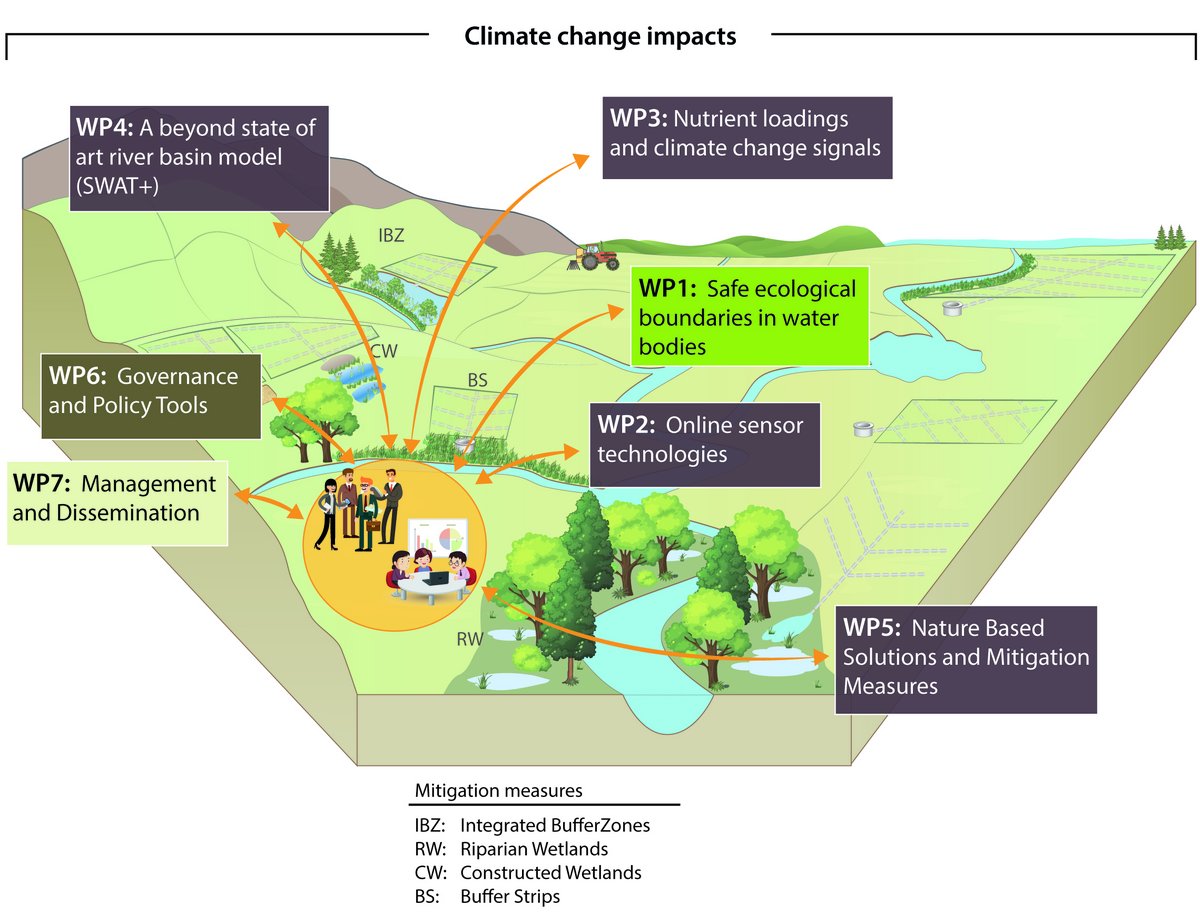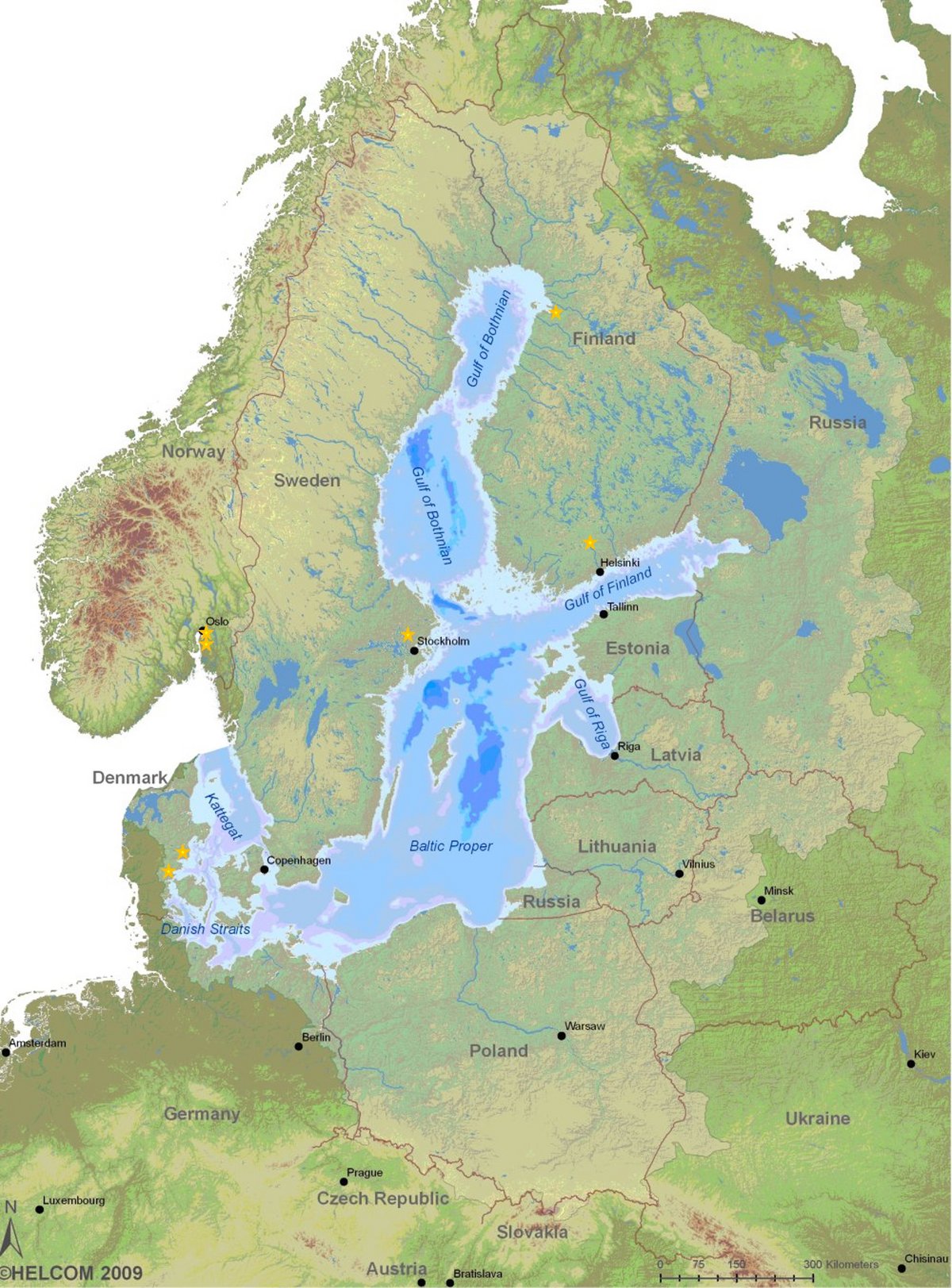Latest news
Work Package 6 with the second deliverable (D6.2) 18th April 2024 (M202)
Regional project meetings in October-November 2024
The project has started its first preparations for the upcoming regional project meetings with stakeholders in our river basins. The new round of regional meetings are to be held during the period October-November 2024. As part of our preparations we have made a flyer that together with local information will be used as a first invitation to the meetings in our partner countries.
Nitrogen and phosphorus load reduction approach within safe ecological boundaries for the Nordic-Baltic region
Objectives
NORDBALT-ECOSAFE focuses on a region in Europe that offers ideal conditions for developing an innovative methodology to quantify nitrogen (N) and phosphorus (P) sources and pathways and efficiently reduce nutrient emissions. The Nordic-Baltic region faces the same problems as to reaching the good ecological quality objectives for freshwater as well as coastal marine and transitional waters set by the EU Water Framework Directive (WFD) as other European regions (Figure 1). Moreover, the main receiving marine water bodies, the Baltic Sea and the North Sea, are still heavily impacted by eutrophication despite recent success in reducing nutrient loadings from their drainage basins. Climate change is expected to further exacerbate eutrophication in the Baltic Sea, and the reduction goals for N and P loads prescribed by the Baltic Sea Action Plan (HELCOM 2007) will have to be adapted accordingly. However, the definition of safe ecological limits needs to take into consideration not only regional but also local ecosystems as well as other EU regions to enable food production for the population in the Nordic-Baltic region. Large-scale goals need to be balanced with goals/objectives to protect local biodiversity and improve the ecological status of smaller water bodies. Likewise, considering the spatial scale of their effectiveness is essential when selecting suitable measures to ensure that nutrient loads stay within the boundaries set. Solutions need to follow a common regional strategy but be targeted to local climatic, hydrological, biogeochemical, and agronomic conditions as well as stakeholder perceptions and preferences.
The objectives of NORDBALT-ECOSAFE specifically address several limitations to our understanding of nutrient pollution sources, pathways, and ecological impacts at different spatial scales, which potentially impede or slow down the achievement of the UN Sustainable Development Goals and the objectives of the European Green Deal, especially the 2030 Climate Target Plan, the EU Forest Strategy for 2030, the EU Biodiversity Strategy for 2030 and the Farm to Fork Strategy. Accordingly, they are highly pertinent to the work programme topic.
The overarching aim of NORDBALT-ECOSAFE is to ensure that N and P concentrations and loadings in water bodies in the Nordic-Baltic region are reduced and will remain within safe ecological boundaries.



